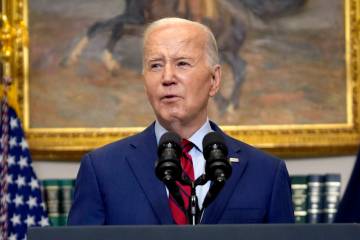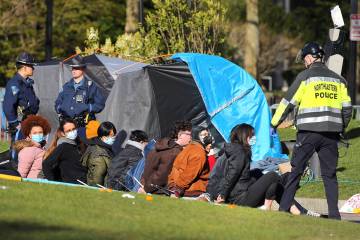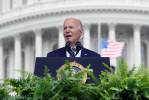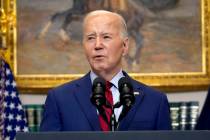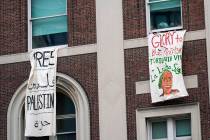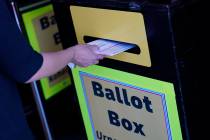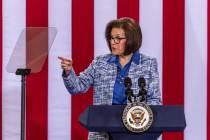VICTOR JOECKS: Why CCSD can’t fix its teacher shortage
You can’t fill a bucket with a gaping hole in the bottom by dumping more water into it. Yet, that’s the Clark County School District’s approach to an ongoing teacher shortage.
On Tuesday, the district launched a new effort to recruit teachers. It’s a pressing need. The district has more than 1,600 openings for teachers and other licensed personnel. This isn’t just schools looking to fill positions when teachers leave at the end of the year. Campuses started this school year with more than 1,200 licensed vacancies. For context, the district employed 15,000 licensed teachers at the start of the school year.
It would be problematic enough if those vacancies were spread evenly throughout the district. But they aren’t. The worst-performing schools have the most vacancies. At the start of last school year, four- and five-star schools averaged fewer than one opening per school. One-star schools averaged 4.7 openings. The same pattern holds true when looking at wealth and location. Schools in Summerlin and Henderson have few openings. Those in North Las Vegas and the urban core can’t fill their staffs.
This creates a doom loop. Students at low-performing schools learn less because their schools don’t have enough teachers. It’s harder to attract teachers to those schools because students are low-performing.
The natural assumption is that the district needs to do a better job recruiting new teachers. Significant pay hikes over the past two years were supposed to make the district more competitive in hiring. It didn’t work.
In 2015, the district started the year with 881 teaching vacancies. Its starting teacher salary was under $35,000. Now, starting teacher pay is more than $54,000, yet its vacancy number has nearly doubled. Not a great return on investment.
That’s because the district’s biggest problem isn’t attracting teachers. It’s retaining them.
This year, the district’s turnover rate for secondary math teachers was 14.1 percent. Last year, it was 6.1 percent. Current numbers are from Feb. 5, which means they will certainly be higher when the school year ends. In secondary English, this year’s turnover rate is 15.9 percent. Last year, it was nearly 20 percent. That’s staggeringly high.
Things aren’t that bad everywhere. This year, the turnover rate among elementary positions was 5.9 percent. Last year, it was 7.2 percent. In Gifted and Talented Education, the turnover rate was below 4 percent, both this year and last year.
So why are secondary teachers so much more likely to leave? Two possibilities spring to mind.
First, elementary teachers don’t have to worry their students will physically overpower and assault them. The district’s years-long push to reduce suspensions and expulsions led to more violence on campus, including against teachers.
Second, the district gutted grading standards. Most third graders aren’t thinking about how to game the system. Older kids are. That’s a morale killer, especially for a subject such as math where “boring” homework is essential to learning.
The good news: The district can fix those policies, which would help alleviate its teacher shortage. The bad news: Its leaders have shown no interest in doing so.
Contact Victor Joecks at vjoecks@reviewjournal.com or 702-383-4698. Follow @victorjoecks on X.






